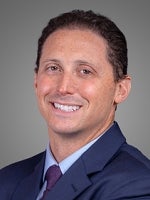Last month, New York State began a formal review of its Certificate of Need (CON) process for nursing homes, launching a timely conversation about how best to align regulatory oversight with evolving system needs. A new advisory committee, convened by the Public Health and Health Planning Council (PHHPC), has been charged with evaluating the state’s current CON framework and recommending changes to improve transparency in ownership, strengthen financial accountability, and streamline decision-making.
Most of the public discussion so far has focused on ownership disclosures and the financial profiles of applicants. But there’s a deeper question at play: how can the state’s CON process better support the ability of providers to adjust to demographic changes, shifts in acuity, and real-time community needs? The current regulations—rooted in Public Health Law § 2801-a and implemented through 10 NYCRR Part 710—require providers to undergo full or limited review for any changes to licensed bed capacity, including relatively straightforward actions like decertifying beds, shifting capacity between sites, or converting units to specialized care. In practice, that means even thoughtful, data-driven proposals often get bogged down in a lengthy and complex regulatory process.
What is particularly challenging is that the existing system does not always distinguish between projects that are expanding capacity and those that are simply trying to realign or modernize services. Providers trying to repurpose beds to reflect current utilization patterns, or to bring their operations in line with broader system priorities, often face the same regulatory burdens as those seeking to build new facilities. That dynamic can be frustrating for organizations that are genuinely trying to innovate or respond to urgent local needs, especially in areas with aging populations, growing complexity of care, or persistent health disparities.
As the PHHPC advisory committee begins its work, it is expected to examine several areas for potential reform. These include expanding and clarifying ownership disclosures, strengthening the state’s approach to character and competence reviews, and considering new review tracks for proposals that do not involve capital expenditures or changes in total capacity. There is also a growing recognition that New York’s traditional reliance on rigid population-based planning ratios may need to evolve, in favor of more dynamic, real-time measures of utilization and community demand. Any of these changes could signal a meaningful shift in how the Department of Health evaluates nursing home proposals and prioritizes systemwide goals.
For providers, this presents both a challenge and an opening. The regulations have not changed yet—but the conversation clearly has. CON applications that rely on vague justifications or templated responses will likely fall flat in this environment. Applicants may wish to support their proposals with objective, verifiable data. That means using current hospital discharge patterns, detailed demographic forecasts, regional occupancy and staffing trends, and actuarial or health planning reports to illustrate not just what they want to do, but why it is needed and how it serves a broader public good.
This emphasis on objectivity can be woven throughout the application. In the public need narrative, it can be helpful for applicants to clearly present the underlying data and methodology supporting their application. In the financial sections, applicants may move beyond spreadsheets to tell a story about long-term sustainability. In describing the project’s alignment with state priorities, they can connect directly to existing initiatives—like the Master Plan for Aging or Medicaid redesign efforts—that are already shaping New York’s long-term care landscape.
It is also worth thinking about how providers can present themselves as credible, collaborative partners in that broader transformation. Engaging stakeholders early, incorporating community feedback, coordinating with other health systems or payers, and presenting clear, honest assessments of local need are all ways to demonstrate seriousness and shared purpose. The Department of Health and PHHPC are increasingly looking for proposals that do not just meet technical criteria, but that move the system forward.
The current reform process offers a real chance to rethink how New York approaches long-term care planning. Rather than treating CON as an obstacle to work around, providers can use it as a platform to articulate bold but grounded ideas that respond to the realities they are facing on the ground. If done right, this moment of reform can ensure that New York’s nursing home infrastructure is better equipped to meet the challenges ahead, with a regulatory system that supports innovation while safeguarding transparency, quality, and equity.



 />i
/>i
